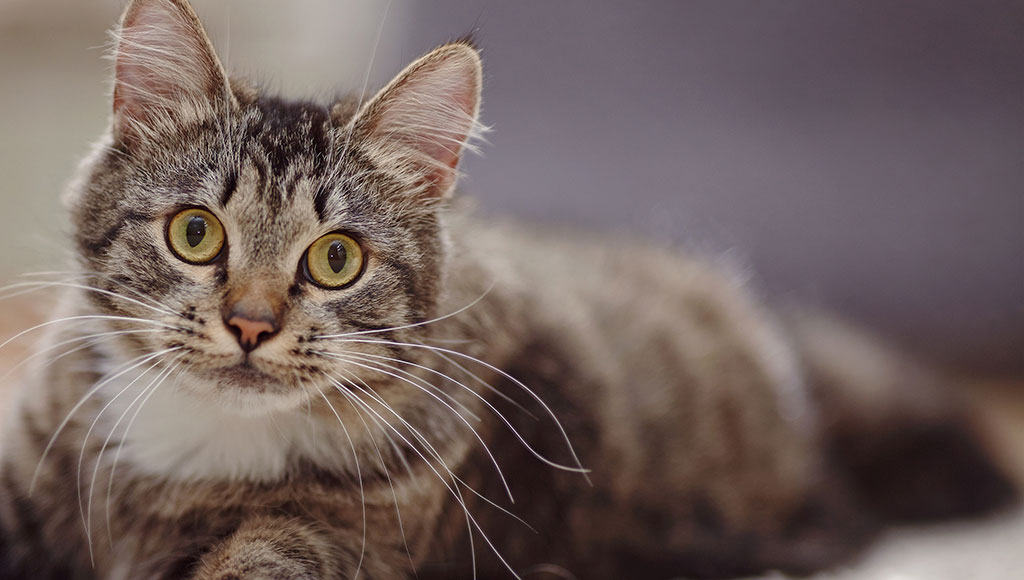How to Recognize and Treat Cat Mites
Learn how to recognize the symptoms of cat ear mites and burrowing mites, along with the best home remedies and treatments.

Knowing how to recognize and treat cat mites, whether they’re cat ear mites or burrowing mites, is important to the health of your feline friend.
If you've noticed your cat keeps scratching her ears, shaking her head a lot, or starting to lose hair, she may have become infested with cat ear mites or burrowing mites. While the mites themselves are a big problem, the real danger is your cat scratching itself in an attempt to relieve the itching. This repeated scratching can result in a number of deep wounds as the itching becomes much more relentless.
Types of Cat Mites
There are two types of mites that most often cause harm to cats: ear mites and burrowing mites. Ear mites are extremely common and highly contagious, with symptoms that include excessive ear scratching and black ear puss. Burrowing cat mites can cause severe hair loss and result in visible damage to your cat's skin and fur. There are many different ways to get rid of cat mites, including over-the-counter treatments and medications prescribed by your veterinarian.
Can Humans Catch Cat Mites?
Along with worry over your pet's health, there may also be serious health ramifications for the humans living alongside your suffering kitty. Cat mites (both ear mites and burrowing mites) can only thrive when given a host to feed off, but this also means that they can travel from one host to another. You and other people or animals in your household may be prone to catching your cat's mites and suffering from the same problems as your cat.
Cat Ear Mites
The most common type of mites that can trigger problems tend to be cat ear mites, which are tiny parasites that live inside the ear canal of an infected animal. In the case of cats, the most likely organism is otodectes cynotis. The mites feed on the ear wax and other dirt inside a cat's ear. They are normally found in the ear canal and can cause bleeding in your cat’s ears from their bites. They may also cause your cat to constantly scratch itself due to the itching. If your cat is suffering from ear mites the easiest solution is to visit your local pet store for wax removal ear drops. This simple, home remedy works because cat ear mites thrive off ear wax, so by purging out the wax, you can also remove the mites.
Cat Ear Mite Symptoms
So, how do you know if your cat is infested with ear mites?
#1 Your cat keeps scratching his ears or shaking his head
Your cat may scratch at his itchy ears or start shaking his head a lot. While cat ear mites are microscopic, they can be quite pesky. Just imagine feeling hundreds of little crawly things in your ears!
#2 You see black stuff in your cat’s ears
Cat ear mites on the insides of the ears will look dirty, usually with a dark brown or reddish-brown debris. Sometimes a black crust forms on a cat’s ears, as well. This crust can clog the ear canal over time.
#3 Your vet finds them during an exam
Your veterinarian can easily diagnose cat ear mites. The ear mites can be seen in the ear with an otoscope. Sometimes your veterinarian will swab the ear and examine the debris under a microscope.
Are Cat Ear Mites Contagious?
Yes! Cat ear mites are highly contagious. In fact, cats can get them or share them with other animals as well. So, if any of your pets (including dogs, cats, or rabbits) have ear mites, you may want to treat all of them.
Cat Ear Mite Treatments
To treat cat ear mites, the first step is to clean out the ear. You need to remove the buildup of wax and mites that has accumulated. The best way to do this is by very gently flushing your cat’s ears with an ear cleaning solution purchased from the pet store. Since there is a risk of damaging your cat's ear drum or pushing mites further into the ear canal, you may want to have your veterinarian do this.
Once the ears have been cleansed of residue from the mites, you can apply medication. The most effective cat ear mite treatments for cats contain insecticide with Milbemycin or a very low concentration of ear mite products that contain Pyrethrins. Make sure that any ear mite medicine that you use for your cat is specifically labeled for use in cats. Dog ear mite medication can be too strong and dangerous to give to your cat. Ear mite medication will usually be in the form of drops which you will put in the cat's ears, then massage so it gets good coverage. While you can buy over the counter treatments for ear mites, the medication provided by your veterinarian is generally stronger and may be more effective.
How Long Does It Take to Treat Cat Ear Mites?
Ear mite medicine for cats is generally applied daily for several days in a row. Then, you usually wait a week, after which the cleansing and medication process is repeated. You may need to do this whole procedure for three or four cycles in order to kill all the ear mites in your cat. A cat ear mite can spend its whole life in a cat's ear, from hatching, breeding its own young, and finally through to its death. You’ll need to kill all the ear mites at every stage of their development. Unfortunately, cat ear mites can also live outside the ears, surviving in the surrounding fur. You may need to apply the ear mite medicine outside of the ear area for this reason.
Burrowing Mites
Another parasite that has a much more visible impact on your cat is the burrowing mite, which eats away at the surface of the skin. An infestation of burrowing mites can lead to severe hair loss in your cat and requires treatment immediately. The best thing to do if you see signs of skin irritation on your cat is to call a vet. They can recommend an over-the-counter cat mite treatment such as a shampoo or anti-parasitic cream to help eliminate the mites. Treating cat mites as soon as they become apparent is the best way to kill them before the problem becomes more serious. One of the easiest methods of treating cat mites that cause hair loss is to bathe your cat in a homeopathic pet shampoo.
For Sever Cat Mite Infestations, Consult Your Vet
In severe cases of cat mite infestation, you'll need to visit your veterinarian for a prescription medication rather than a milder over-the-counter product. If the mite problem has gotten to the stage where it has spread to other household animals or human family members, then it's definitely time to make an appointment with the vet. The consequences of a mite colony flourishing on your cat could be lethal in the long run, so keep an eye out and monitor your cat's progress. The sooner you catch signs of those nasty mites, the sooner you can begin treating them and curing your cat.
Medically Reviewed by Sara Ochoa, DVM
Ready to start saving money on pet wellness care?
Then take a look at Mint Wellness, the pet wellness plan that provides fast reimbursement on routine pet care. Save on vaccinations, wellness exams, preventatives, dental, and more!
Learn More

